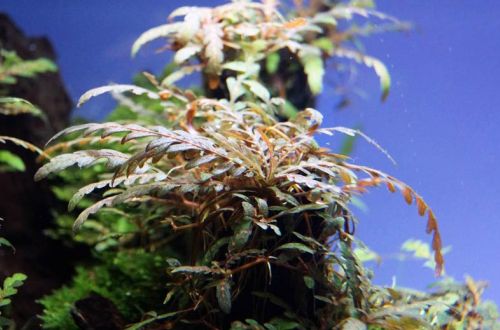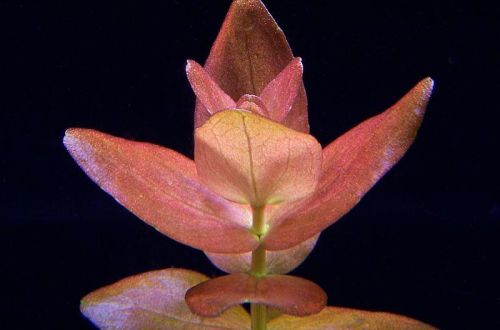
Hygrophila pinnacifida
Hygrophila pinnacifida or Hygrophila pinnate, scientific name Hygrophila pinnatifida. The plant is native to India. It grows along the banks of streams and rivers at the foot of the Western Ghats mountain system (Maharashtra, Goa, Karnataka, Tamil Nadu).

Known since the middle of the 19th century. Biologist Nicol Alexander Dalzell originally assigned it to the genus Nomaphila. In 1969 there was a change in the scientific classification and the plant was transferred to the genus Hygrophila. Despite such a long history in aquariums, it appeared only in the 2000s.
Able to grow both completely submerged in water and in the air on moist soil. Depending on the growing conditions, the appearance of the plant differs markedly.
Under water forms dense bushes from several closely spaced sprouts. Creeping shoots grow from the mother plant, which can take root in the ground, on driftwood or stones. On these shoots, in turn, erect sprouts develop, however, sometimes they remain for a long time in the form of miniature rosettes. The leaf blade is strongly cut into separate fragments. The upper part of the leaves is brown or olive green with light yellow veins, the lower surface is burgundy red.
In the surface position, it forms a tall erect stem. The aerial leaves are shorter and wider than the underwater ones. The edge of the leaf blades is uneven. The entire plant is covered with tiny glandular hairs. Violet flowers appear at the top of the stem at leaf nodes.
Growing is relatively easy. Hygrophila pinnate is not so demanding on the mineral composition of the soil, consuming a significant part of the nutrients directly from the water with the help of leaves, and not by the root system. Any lighting conditions, but in bright light there is an active development of lateral shoots.




